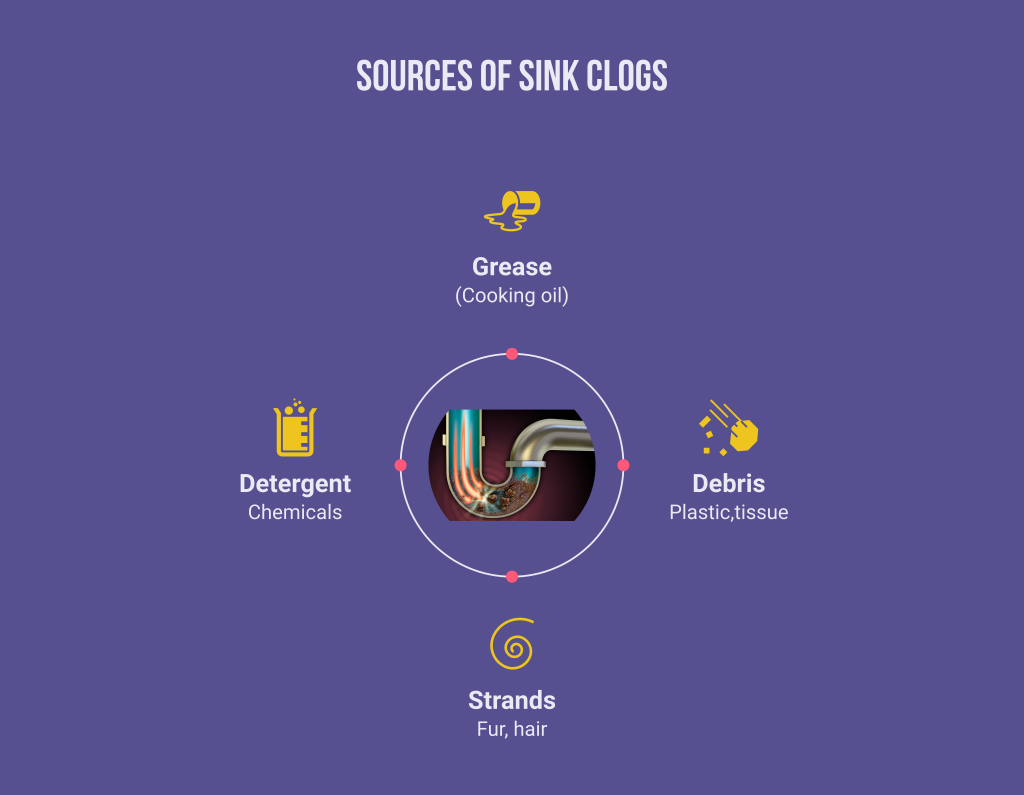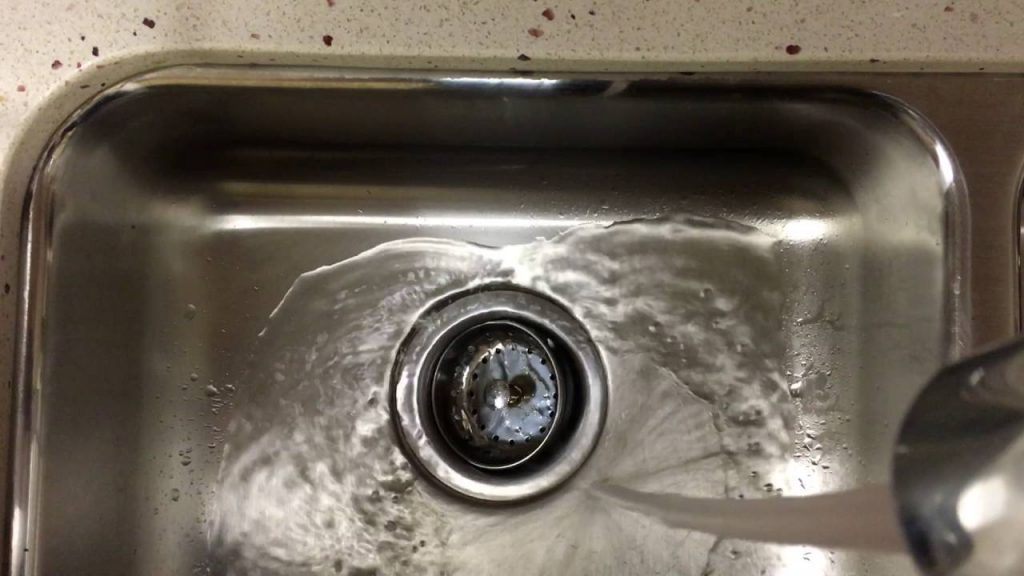Unclogging a kitchen sink drain may take hours and might even hurt your hand in the process. And if you don’t have a sink plunger handy, the situation becomes more frustrating. But don’t worry! You can use various household items to solve your blocked sink. This article will show you an instant solution to this problem: how to unclog sink without plunger?
What Happens When The Kitchen Sink Is Clogged?
When the kitchen or bathroom sink gets clogged, it can be frustrating to clean it up. Water won’t drain and you may have to deal with a mess. It doesn’t necessarily matter until it becomes worse. This is usually the case when the sink has been backed up for days.
If you try to turn on the disposal and run the water while there is still food in the sink, everything can spill into the sink disposal itself and then onto the floor below. And it’s a disaster.
Before you become a plumber immediately, find out what’s clogging your sink.
What Makes A Sink To Clog?

It’s frustrating having a sink that’s clogged. And even new sinks do this! There are various possible reasons for this situation, so let’s reveal them one by one.
🟪 Grease
Grease and oil are among the primary suspects that clog sinks and drains. Clogging happens when the oil was stuck to the surface of your drain and pipe, creating a thick mass. If this is not prevented or managed early, clogs will happen.
🟪 Foreign objects
There are times that we tend to throw objects in the sink, such as paper towels, plastic wraps, and even cotton. But these things can be the reasons why your sink is clogged! This is especially true if your sink disposal can’t cut them, so they will be just stuck there and create a clog.
🟪 Hair
Aside from paper towels, and plastics, one of the most common household problems is hair. Hair is everywhere and it usually targets the drain. This thing is also hard to melt or break, especially when it piles up in your pipe.
🟪 Detergent
We all know that detergents clean almost everything. But if you don’t flush or wash it completely, the sediments can be piled up and create a clog. Aside from this, there are detergents or cleaning agents that have strong components which means they are hard to break with water. So before you buy a detergent, check its contents and choose only organic-based agents.
How To Unclog Sink Without Plunger?

Getting a clogged sink is one of the most “usual” scenarios in every household. This happens if you forget to collect food scraps in your sink. But what if you don’t have a plunger? In this section, we’ll reveal tips on how to unclog your sink using some tools and a little bit of your patience.
🟪 Hot water
Using hot water will be your stepping stone. You just pour boiling water into your sink until the clogs melt away. And in case you don’t have access to boiling water (it may happen!), you can cover the sink with a warm towel until your drain has collected enough heat to slightly melt the things that clog your sink.
🟪 Enzyme cleaner
As its name suggests, an enzyme cleaner is a product that contains enzymes wherein if you put it in a substance, it will break down the organic matter inside it. This type of cleaner is one of the most effective cleaners and the fastest way to unclog a sink because food particles are composed of organic matter.
Just pour your enzyme cleaner directly into the drain. Wait overnight and wash it with high-pressure water. This method is a type of biological washing, so it’s safe and really effective.
🟪 Drain snake
A drain snake is an electric tool with a long wire to reach the pipe connected to your drain. The wire spins and you will see that it tangles the trapped hair and food scraps. This plumber’s snake tool has various lengths so measure the distance from your drain to the pipes before buying one. There’s also a variant with a bent wire to reach more spots during drain cleaning.
🟪 Vinegar, baking soda, and dish soap
These three agents are the most convenient ways to unclog your sink. This is because they are available in most households and they are safe to use. Just mix white vinegar and baking soda and pour the mixture into the drain. After letting the baking soda mixture sit for a few minutes, flush everything with water.
The same goes for dish soap. Mix dish soap with warm water and pour it directly into your drain. This solution will help break down fats that have been solidified and other traces of food residues.
Preventing Sink Clogs
Clogs are the worst, especially a clogged drain. It’s filthy, embarrassing, and frustrating! But this can be prevented if you follow these simple steps:
🟪 Garbage disposal is not a trash bin
Keep in mind that disposals are generally for food scraps only. You must not throw everything in there because your garbage disposal is not a trash bin! If you do this, your disposal can get damaged, and clogs may form. So if you’re unsure whether your disposal can tear apart the thing you’re planning to throw, just shoot it in the trash bin.
🟪 Use a strainer
A strainer is a useful catcher for unwanted debris that may clog your sink. There are various sizes but it’s advisable to choose those with tiny holes so that no scraps could enter your sink’s drain.
🟪 Clean your sink properly
Clogs always happen if you don’t clean your sink. That is why there are particles that run toward your drain because you let these things live in your sink. If you don’t have time to clean your sink, you can just throw hot water so that grease and oil can be eradicated, at least. Or, just toss the drain cleaners or any washing powder with standing water.
Final Words
Hopefully, these tips and a list of cleaning products may help you unclog kitchen or bathroom sink drains without using a toilet plunger. It may be tricky at first, but once you get used to these methods, you may decide to opt out of a plunger. And in case this guide doesn’t work for you, calling a plumber is the best way you must do.
For more tips on unclogging kitchen drains, click here!
